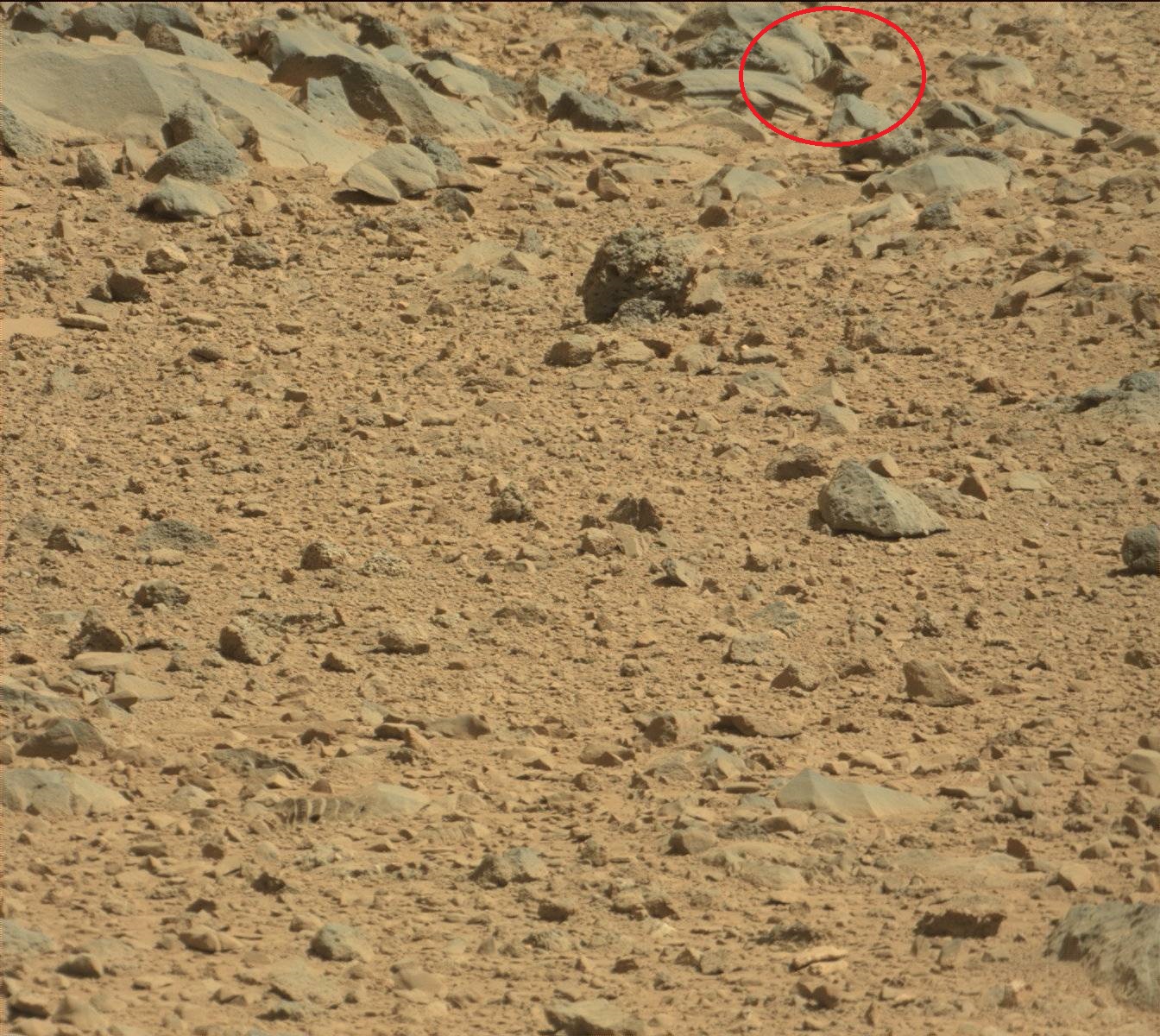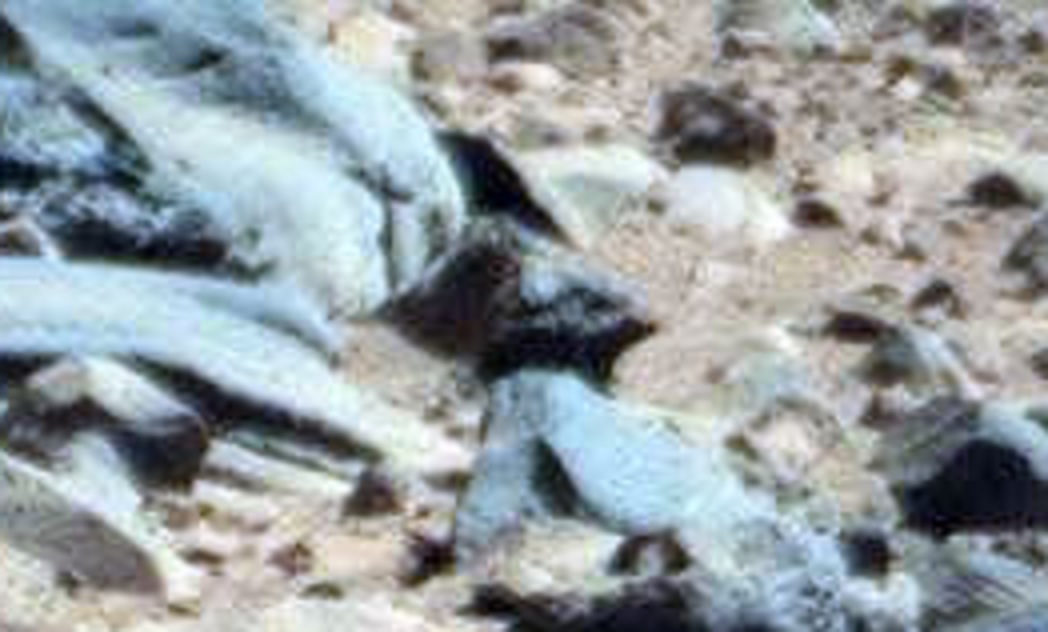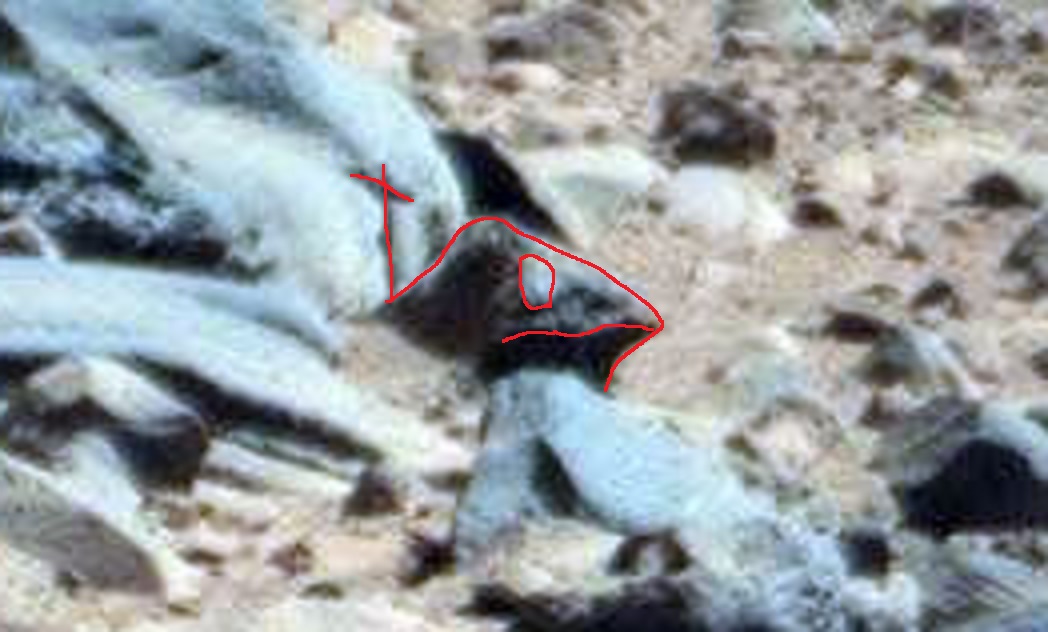It looks like you're using an Ad Blocker.
Please white-list or disable AboveTopSecret.com in your ad-blocking tool.
Thank you.
Some features of ATS will be disabled while you continue to use an ad-blocker.
share:
Sorry, the message was doubled.
edit on 5-7-2015 by Clonevandal because: (no reason given)
a reply to: Clonevandal
you might be surprised how much so , this fishiness popped up last year, think its in 3d/2d seagull territory , maybe the site of an old marina park, i wonder what Aeons of time would do to seaworld , old signage strewn about, much of it would still be around, if somewhat overgrown and dilapidated.
funbox
you might be surprised how much so , this fishiness popped up last year, think its in 3d/2d seagull territory , maybe the site of an old marina park, i wonder what Aeons of time would do to seaworld , old signage strewn about, much of it would still be around, if somewhat overgrown and dilapidated.
funbox
a reply to: ArMaP
so why the bul# on thier mainsite, in the questions and answers they use dust/absence of, as the causing factor to the sky's hue, why on there main site do they spout such nonscence about Whitebalancing, they could have said, 'heres a picture of mountsharp on a day when its not completly covered by a dust storms' , when these storms settle down it, allows some of the skys natural gaseous colors to be seen'
job done without the cack
funbox
so why the bul# on thier mainsite, in the questions and answers they use dust/absence of, as the causing factor to the sky's hue, why on there main site do they spout such nonscence about Whitebalancing, they could have said, 'heres a picture of mountsharp on a day when its not completly covered by a dust storms' , when these storms settle down it, allows some of the skys natural gaseous colors to be seen'
job done without the cack
funbox
a reply to: ArMaP
is this wise of them ?, you know how the rumour wheel goes, or is this intentionally force fed fertiliser ?
the way i see it ,is that site is there main portal to the images from curiosity. this gateway should have the 'science pages' and all the information that pertains to the mission and mars, there should be no room for highly suspect excuses and explinations
funbox
is this wise of them ?, you know how the rumour wheel goes, or is this intentionally force fed fertiliser ?
the way i see it ,is that site is there main portal to the images from curiosity. this gateway should have the 'science pages' and all the information that pertains to the mission and mars, there should be no room for highly suspect excuses and explinations
funbox
originally posted by: funbox
is this wise of them ?, you know how the rumour wheel goes, or is this intentionally force fed fertiliser ?
I don't think it's wise, but from what I have seen, the type of information they post on their "public relations" pages is mostly what people are expecting to see, pretty pictures (even if they have to change them) and simple, technical-sounding, explanations.
Most people accept things as they see them, with only a few doubting the official version of things, but most of those few doubters see actions like this as evidence of NASA hiding things, while the scientists, used to the "science" pages, when asked about things by the "doubters", tell them that everything is published (which is true) and there's no reason for hiding things.
a reply to: funbox
Public relations has always been about: sell something to the public.
Doesn't mater if it's a government agency, or a corporation. Images mater, and how good something looks maters even more.
Take a look at any images of fast food that those corporations present. Does a Big Mac actually look that good when you get it? How about that Whopper?
The reality of what it looks like is nothing like the image they want to project to sell their product.
The government and it's agencies are no different. Look at recruiting posters or vids for the military. I can tell you from personal experience that things do not always look that good.
NASA does the same thing: produce a eye stunning image to the public, because it makes them look good, and John Q Public "ooo's" and "ahhh's" over that image. To the average Joe on the street High Quality, Good Looking Picture = Tax Dollars Well Spent.
Where as the actual science that is being done, the images they need are the raw ones, which in many cases are not that good looking to John Q Public, but is quite useful to those working in the field and what they expect.
As for whether it's a good idea or not: the amount of people that run around claiming NASA is hiding something is a lot smaller than the actual population. It's not something they are worried about (whether they are actually hiding something, or being worried about their image).
Public relations has always been about: sell something to the public.
Doesn't mater if it's a government agency, or a corporation. Images mater, and how good something looks maters even more.
Take a look at any images of fast food that those corporations present. Does a Big Mac actually look that good when you get it? How about that Whopper?
The reality of what it looks like is nothing like the image they want to project to sell their product.
The government and it's agencies are no different. Look at recruiting posters or vids for the military. I can tell you from personal experience that things do not always look that good.
NASA does the same thing: produce a eye stunning image to the public, because it makes them look good, and John Q Public "ooo's" and "ahhh's" over that image. To the average Joe on the street High Quality, Good Looking Picture = Tax Dollars Well Spent.
Where as the actual science that is being done, the images they need are the raw ones, which in many cases are not that good looking to John Q Public, but is quite useful to those working in the field and what they expect.
As for whether it's a good idea or not: the amount of people that run around claiming NASA is hiding something is a lot smaller than the actual population. It's not something they are worried about (whether they are actually hiding something, or being worried about their image).
a reply to: ArMaP
ide imagined you say that ,considering the vitrol, ive had in the past for posting an image exemplar, that's soaked in information-less fluids
pictures yes , information that's just plain bull..?. No, why do they like to breed ignorance ? behind a guise of officialdom
so where can I find the daily windspeed/humidity data ? .. the public mars portal, seems to have gaps that start from sol 1 to sol 1032
no reason to hide it is there ?
funbox
I don't think it's wise, but from what I have seen, the type of information they post on their "public relations" pages is mostly what people are expecting to see, pretty pictures (even if they have to change them) and simple, technical-sounding, explanations.
ide imagined you say that ,considering the vitrol, ive had in the past for posting an image exemplar, that's soaked in information-less fluids
pictures yes , information that's just plain bull..?. No, why do they like to breed ignorance ? behind a guise of officialdom
Most people accept things as they see them, with only a few doubting the official version of things, but most of those few doubters see actions like this as evidence of NASA hiding things, while the scientists, used to the "science" pages, when asked about things by the "doubters", tell them that everything is published (which is true) and there's no reason for hiding things
so where can I find the daily windspeed/humidity data ? .. the public mars portal, seems to have gaps that start from sol 1 to sol 1032
no reason to hide it is there ?
funbox
a reply to: eriktheawful
I don't mind them white balancing there own pictures , just lying about how the colours are produced. so far we have two reasons.. any reason for that ?
funbox
I don't mind them white balancing there own pictures , just lying about how the colours are produced. so far we have two reasons.. any reason for that ?
funbox
originally posted by: funbox
ide imagined you say that ,considering the vitrol, ive had in the past for posting an image exemplar, that's soaked in information-less fluids
pictures yes , information that's just plain bull..?. No, why do they like to breed ignorance ? behind a guise of officialdom
Sorry, I don't understand what you mean.
so where can I find the daily windspeed/humidity data ? .. the public mars portal, seems to have gaps that start from sol 1 to sol 1032
I didn't took the time to see if that information is there or not, or how to read it from the data files, but the PDS Atmospheres Node has the data from the REMS, up to sol 804.
no reason to hide it is there ?
Not as far as I know.
a reply to: funbox
Sorry, you'll have to forgive me: which lie?
NASA get's accused by so many people on here that they are lying about everything that I can't keep track of it. They even get accused of lying about things they do not have anything to do with, so it gets even more confusing.
Sorry, you'll have to forgive me: which lie?
NASA get's accused by so many people on here that they are lying about everything that I can't keep track of it. They even get accused of lying about things they do not have anything to do with, so it gets even more confusing.
a reply to: ArMaP
I checked every file , no listing of anything relating to daily humidity and windspeeds .. what did I miss ?
cab.inta-csic.es...
still no update there
funbox
I didn't took the time to see if that information is there or not, or how to read it from the data files, but the PDS Atmospheres Node has the data from the REMS, up to sol 804.
I checked every file , no listing of anything relating to daily humidity and windspeeds .. what did I miss ?
cab.inta-csic.es...
still no update there
funbox
a reply to: eriktheawful
white balancing causing the sky to be blue in the pictures , and also ArMaP's link to nasa real description of why..
thunderstorm. stops play right about now
funbox
white balancing causing the sky to be blue in the pictures , and also ArMaP's link to nasa real description of why..
thunderstorm. stops play right about now
funbox
originally posted by: funbox
white balancing causing the sky to be blue in the pictures , and also ArMaP's link to nasa real description of why..
Those are two different things.
White balancing the photos as we see them may result in a bluish image (it can also result in other tints, but it depends on what the photo shows).
NASA's description of how the sky would look without dust is just that, how the sky would look without the dust. As the dust is there we get the orange tinted photos.
originally posted by: funbox
I checked every file , no listing of anything relating to daily humidity and windspeeds .. what did I miss ?
You know what to look for on those TAB files? Those are the ones with the raw data.
As I said, I didn't read the definitions files to see how the data is stored on those files, so I don't know how to read them.
PS: that's why most people prefer pretty pictures, real science looks too much like work.
a reply to: ArMaP
well I managed to open them all , there is no information that I see regarding humidity and windspeeds on a daily basis? , care to post it up , im just not seeing it.
lots of descriptions regarding the mission etc though , as almost as if these documents were used as website sub headings and content . where is this link from on there ftp section?
funbox
well I managed to open them all , there is no information that I see regarding humidity and windspeeds on a daily basis? , care to post it up , im just not seeing it.
lots of descriptions regarding the mission etc though , as almost as if these documents were used as website sub headings and content . where is this link from on there ftp section?
funbox
a reply to: ArMaP
mars.nasa.gov...

with
quest.arc.nasa.gov...
why is there any need then to try and explain the actual white balanced photo's as faulty due to the nature of white balancing ,*as apposed to the hypotheticals they give answer's to in your linked txt* which they are far from being honest about in that body of text I initially posted
funbox
This mosaic of images from the Mast Camera (Mastcam) on NASA's Mars rover Curiosity shows Mount Sharp in a white-balanced color adjustment that makes the sky look overly blue but shows the terrain as if under Earth-like lighting. White-balancing helps scientists recognize rock materials based on their experience looking at rocks on Earth. The Martian sky would look more of a butterscotch color to the human eye. White balancing yields an overly blue hue in images that have very little blue information, such as Martian landscapes, because the white balancing tends to overcompensate for the low inherent blue content.
mars.nasa.gov...

This is a great question about martian sky color and suspended dust, and we
here on the Pathfinder meteorology team have spent quite a bit of time
talking about it. If the Martian atmosphere were completely clear of dust,
I think that the sky would be quite a bit darker than clear skies here on
earth. If you have ever flown on a plane at 30,000-35000 feet during
daytime, and looked at the sky, you might have noticed that it appears much
darker than from the surface, especially when you look at particular angles
away from the sun. This darker appearance is due in part to the reduced
scattering the light experiences at these high altitudes (low air
pressures..like on the surface of mars!!) compared with the much greater
numbers of molecules the sunlight can 'bump' into on its way to the surface.
Blue light is scattered more effectively by molecules than is the longer
wavelength red light, which is why the sky looks blue.
with
A good question. You are perfectly correct in thinking that an absence of
dust will change the color of the martian sky. Without any dust in the
atmosphere the sky would probably be a dark blue at midday (darker than the
Earth's sky because the atmosphere is much less dense and so there are fewer
air molecules to scatter blue light. At dusk the sky would probably have a
slight reddish hue in the west, particularly if the martian clouds were
reflecting sunlight. The reason for the reddish color would be the same as
on the Earth. Gas molecules scatter blue light and when you look at the Sun
at sunset you are looking through more gas because the Sun is closer to the
horizon. With the blue light scattered out, the remaining light is reddens.
Once again, this effect will be slight compared with the Earth because there
is less gas in the atmosphere of Mars.
quest.arc.nasa.gov...
why is there any need then to try and explain the actual white balanced photo's as faulty due to the nature of white balancing ,*as apposed to the hypotheticals they give answer's to in your linked txt* which they are far from being honest about in that body of text I initially posted
funbox
a reply to: funbox
According to page 17 of the MSL_REMS_EDR_SIS.PDF (or other version) file, for the humidity data we should be looking for the files with with either "HSREG_" or "HSDEF_", so, for example, file SOL_00000_00089/SOL00001/RME_397535244ESE00010000000HSREG__M1.TAB on the DATA/SOL_00000_00089/SOL00001 folder should have that kind of data.
According to page 17 of the MSL_REMS_EDR_SIS.PDF (or other version) file, for the humidity data we should be looking for the files with with either "HSREG_" or "HSDEF_", so, for example, file SOL_00000_00089/SOL00001/RME_397535244ESE00010000000HSREG__M1.TAB on the DATA/SOL_00000_00089/SOL00001 folder should have that kind of data.
edit on 5/7/2015 by ArMaP because: (no reason given)
new topics
-
Short vs. Long?
General Chit Chat: 2 hours ago -
Outgoing Lame Duck BIDEN Officials and Democrats Voice Their Regrets.
2024 Elections: 6 hours ago -
Reflections of Elections past
US Political Madness: 9 hours ago -
President Carter has passed
Mainstream News: 11 hours ago -
Get Reday - Here comes the Bird Flu Pandemic - Millions are Notified
Diseases and Pandemics: 11 hours ago
top topics
-
Get Reday - Here comes the Bird Flu Pandemic - Millions are Notified
Diseases and Pandemics: 11 hours ago, 17 flags -
President Carter has passed
Mainstream News: 11 hours ago, 16 flags -
Outgoing Lame Duck BIDEN Officials and Democrats Voice Their Regrets.
2024 Elections: 6 hours ago, 7 flags -
2 Guys die hunting Bigfoot
Cryptozoology: 12 hours ago, 6 flags -
Reflections of Elections past
US Political Madness: 9 hours ago, 5 flags -
Joe Rogan and The Black Keys Diorama
General Entertainment: 13 hours ago, 3 flags -
Short vs. Long?
General Chit Chat: 2 hours ago, 1 flags
active topics
-
Get Reday - Here comes the Bird Flu Pandemic - Millions are Notified
Diseases and Pandemics • 23 • : BeyondKnowledge3 -
Short vs. Long?
General Chit Chat • 2 • : BeyondKnowledge3 -
My personal experiences and understanding of orbs
Aliens and UFOs • 35 • : Compendium -
Why Such An Uproar Over Non-US Citizens With H1-B Work Visas.
Social Issues and Civil Unrest • 81 • : WeMustCare -
President Carter has passed
Mainstream News • 13 • : WeMustCare -
Joe Rogan and The Black Keys Diorama
General Entertainment • 6 • : GENERAL EYES -
Outgoing Lame Duck BIDEN Officials and Democrats Voice Their Regrets.
2024 Elections • 6 • : WeMustCare -
Treasury Secretary Janet Yellen Says The USA Will Be in Debt Default in Jan 2025 - Unless...
Mainstream News • 35 • : cherokeetroy -
-@TH3WH17ERABB17- -Q- ---TIME TO SHOW THE WORLD--- -Part- --44--
Dissecting Disinformation • 3846 • : 777Vader -
This is why ALL illegals who live in the US must go
Social Issues and Civil Unrest • 35 • : charlyv





